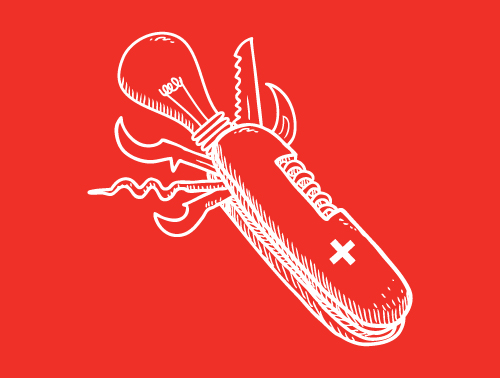
Creativity and innovation, although similar and often used interchangeably, have a subtle, yet significant distinction. Creativity is related to the development of ideas that are both novel and useful, while innovation is related to the application of those novel and useful ideas, thus making them a reality. Both are crucial for a successful organization. Dr Warren Bennis, a leading management scholar, once said that the organizations of the future will increasingly depend on the creativity of their members to survive. Dr Michael Porter, professor, author, and a prominent expert regarding competitiveness and organizational strategy, affirmed that innovation is the central issue in economic prosperity. In this era of modernization, technological advancements, and changing markets, the increased use of creativity and innovation is a necessity.
People are the building blocks of organizations, and thus, the success of organizations depends on the ability of individuals and groups to perform their tasks effectively, to conceive and refine creative ideas, and to implement innovative solutions to maximize organizational competitiveness. Therefore, it is important to determine the Human Resource (HR) best practices that promote creativity in individuals and groups, and to find ways to foster their creative vision, so that the organizations for which they work can reap the benefits of their originality and resourcefulness. Here are some of the ways HR can play a role in promoting creativity in the workplace:
Hire creative people
HR should consider utilizing selection tools that assess a person’s creativity and ability to innovate. It is necessary to hire the best creative minds for various positions within the organization whether it is for Marketing, Research and Development, and Manufacturing. Creative individuals are an asset to any organization as it positively affects organizational performance. Employees’ creativity often provides a starting point for successful organizational innovation.
Establish rewards for creativity
Employees may experience a heightened level of excitement about creativity and innovation if HR implements policies that will create a sense of friendly competition among employees and offers attractive rewards to those who innovate and create new, valuable products and services for their organization. HR needs to be progressive in offering attractive bonuses and other forms of compensation and rewards to those employees who come up with ideas for new revenue models, marketing strategies and product offerings.
Offer training
Many may argue that you cannot train people to be creative. However, studies show that creativity can be learned, and some creativity training programs have proven to be successful. In fact, Georgia State University offers a Certified Professional Innovator program that is designed to help executives build their organization’s internal capacity for generating novel ideas and accelerating profitable growth. Other leading institutions such as UCLA and the University of Miami also offer creativity programs geared towards executives. If the executive education programs are too costly, HR departments should consider creating their own tailor-made programs geared towards increasing their employees’ creative self-efficacy. The employees should also be given an opportunity to transfer what they learned in training, through liberty to innovate in the workplace.
Give employees a greater sense of freedom
Companies such as Google and 3M give their employees time (20 percent and 15 percent respectively) to innovate. These types of initiatives remove organizational barriers and constraints that tend to accompany traditional work. Considering that deviation from the status quo does not always lead to favorable results, it is also important to allow employees who create and innovate to fail without repercussion. In addition, HR should ensure that performance evaluations award extra points to employees who pursue ambitious, creative projects, irrespective of successful or unsuccessful implementation.













